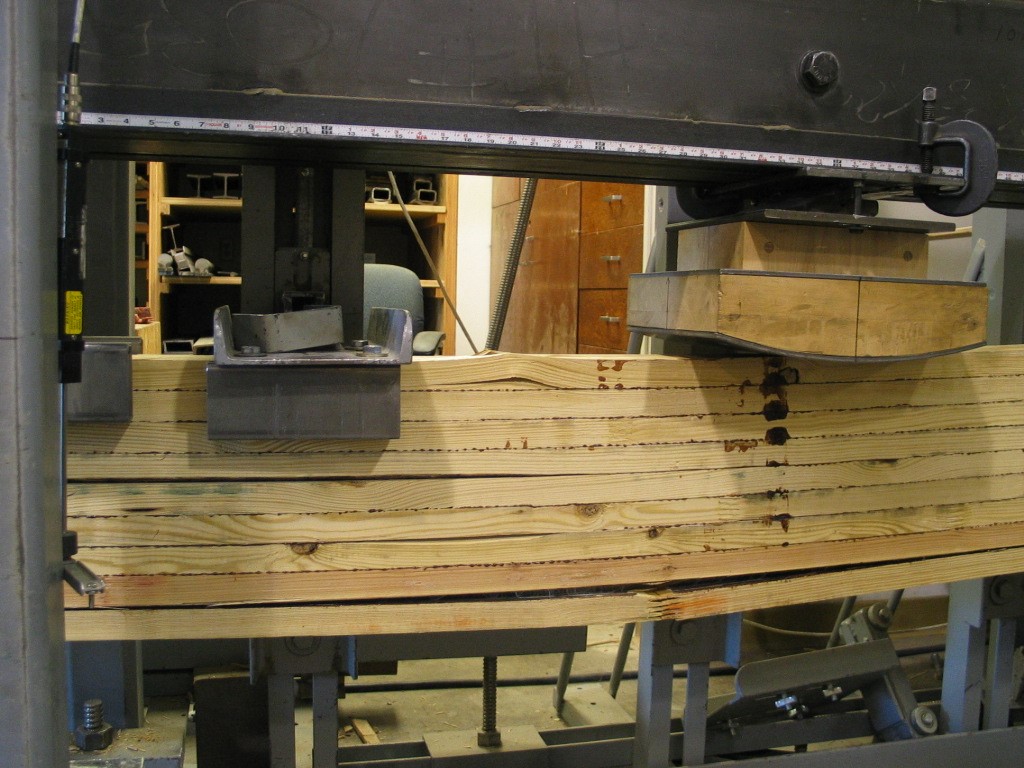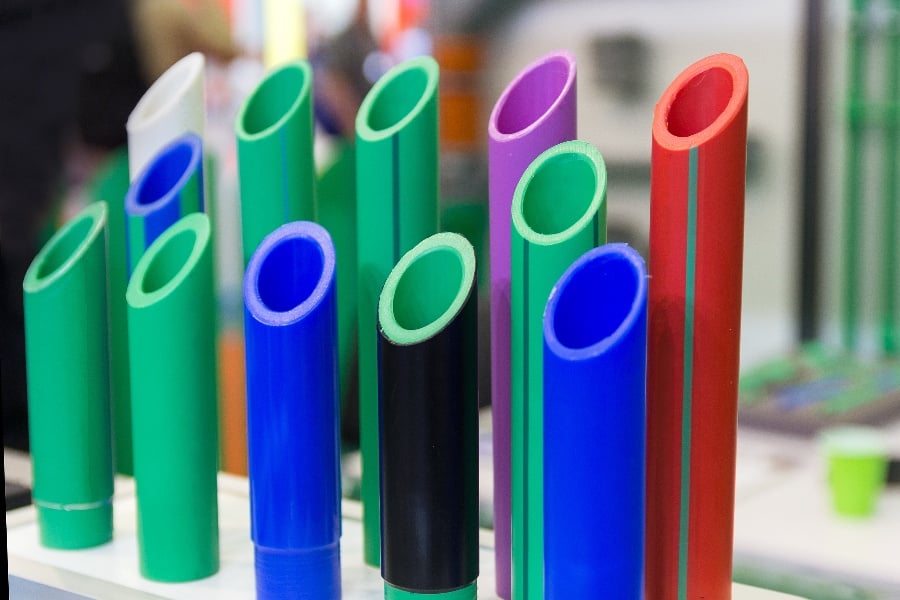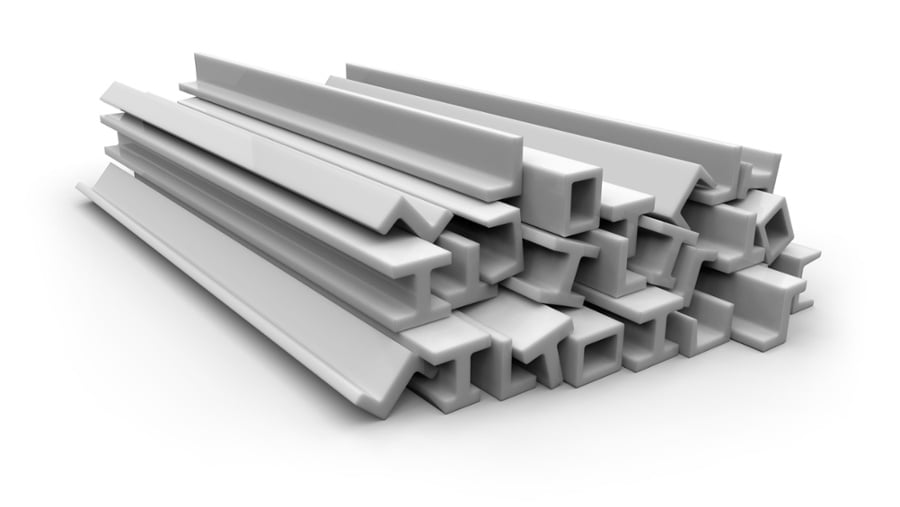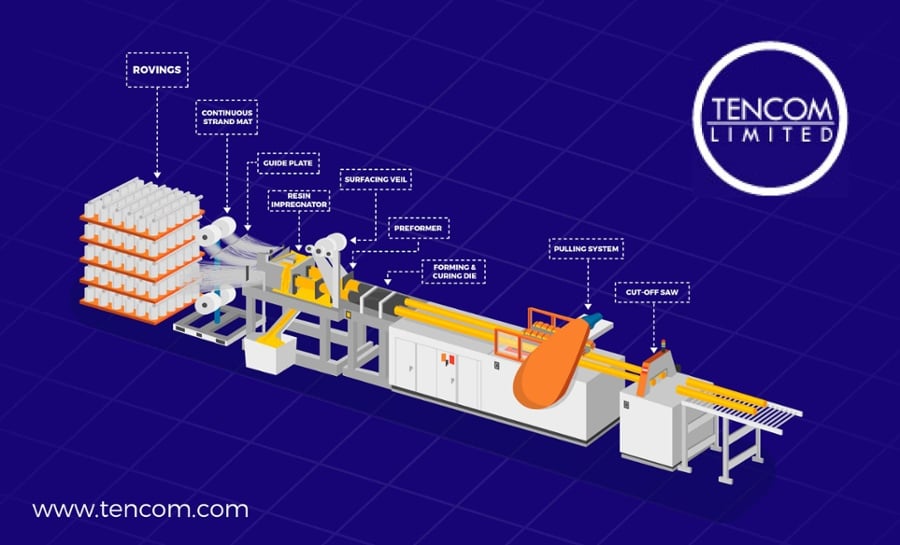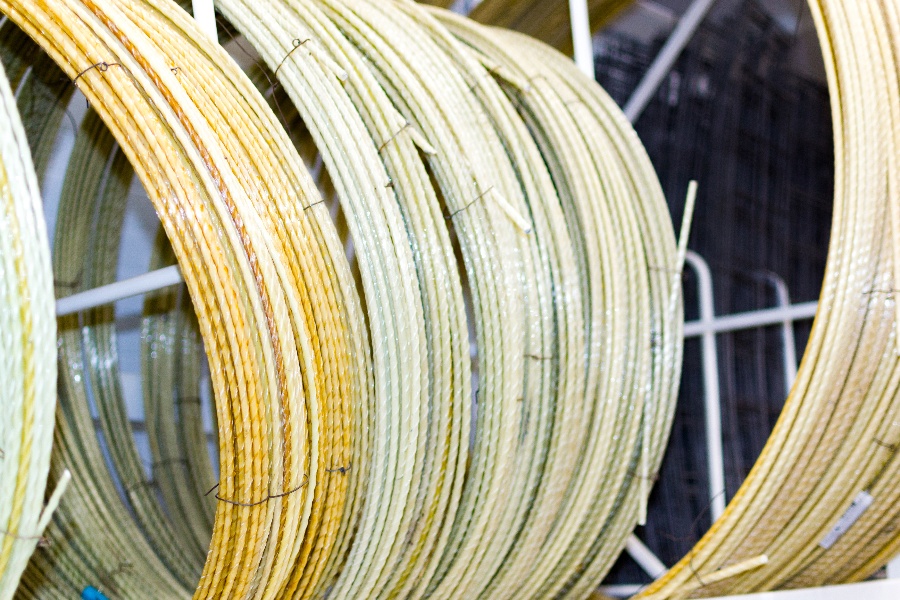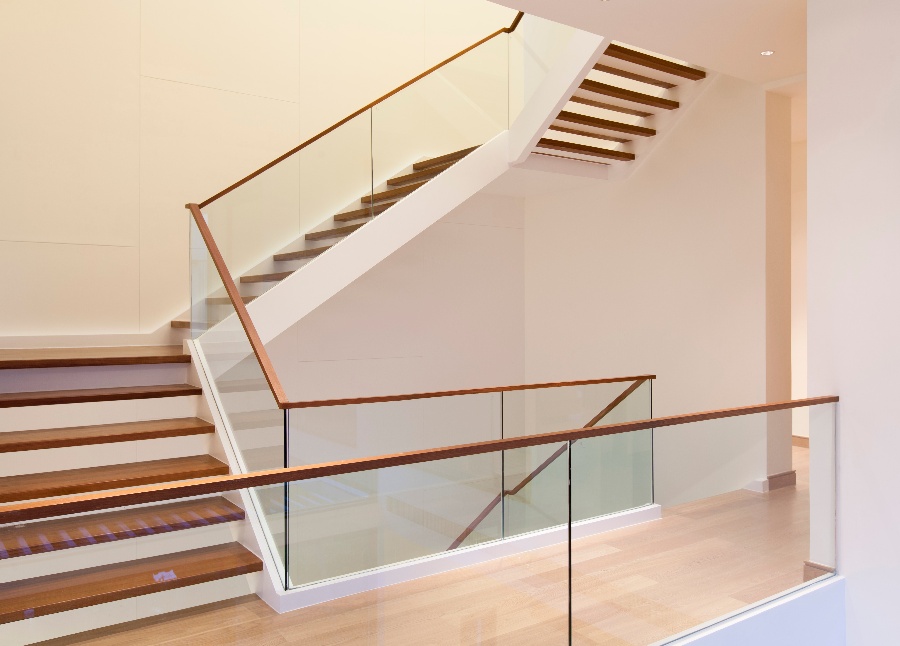
High-strength wood is expensive and difficult to obtain. This is where the pultruded reinforcement can be used on wood to maintain and increase its strength. Glue laminated (or Glulam) beams are a superior replacement to solid wood beams.
These glulam beams can be further reinforced by bonding pultruded epoxy reinforcement into the beams. These are an improvement over the standard beam and are able to reduce the amount of wood (by as much as 16%) needed to make an equivalent beam. Researchers in several countries have done studies that validate the advantages of reinforced glulam beams. For more, read the different studies here, here and here.
When beams bend under a load, they tend to fail in tension. The wood is stretched and pulled apart. Failure usually occurs towards the bottom of the beam. When this happens, the loss of support is quite sudden and the beam could continue to collapse. The upper section of the beam is subject to compression. This compression is less sudden and can be less catastrophic.
With the addition of a pultruded strength member towards the bottom of the beam where the tension failure is likely to occur, the increased tension strength will help equalize the results between the tension and the compression or provide for the compression to be the weak link.
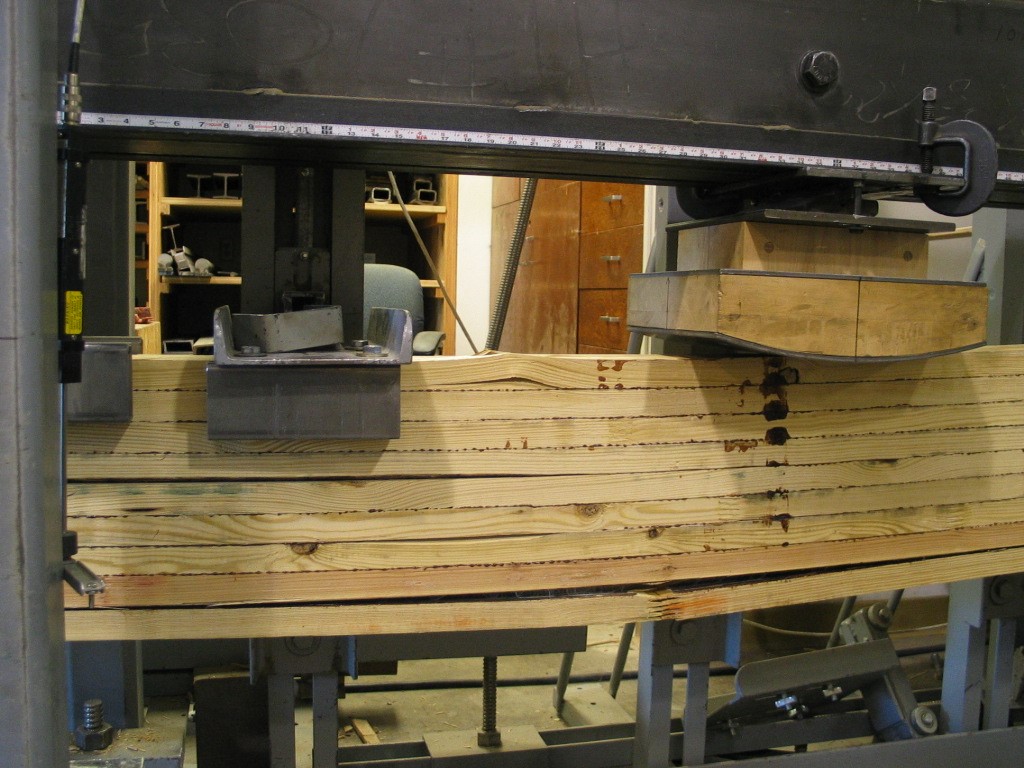
Pic Credit: The Woodlake Group, June 2009
Actual photo of PU reinforced beam in testing: Reinforced beam failure by compression and finger joint tension leading to ultimate reinforcement failure. The results on a 32F are amazing. You can go down a full width with the RP. So 5-1/8" can be made as a 3-1/8", at a 33% wood savings. That makes it cost effective to use the RP in stock beams.
Although the reasoning that “we will just use more wood to make the beam” can be applied to some situations, it does not address all situations.
Total Cost of Wood
Apart from the total cost for more wood and increased beam fabrication, it is also important to consider the increased handling and shipment costs. In addition, factor in the space required to fit the beam. This is where technological advancements such as pultruded strength members can provide a solution.
The latest technical innovation comes from the use of a pultruded polyurethane strength member. Fiber reinforced polyurethane provides several advantages over using an epoxy strength member. The polyurethane strength member is thinner but stronger.
Fiber reinforced polyurethane can be made fire retardant for bonding to the wood beam. It is also resistant to weathering and many chemicals and can be produced at a lower cost. Tests on beams bonded with an EPI (Emusion Polymer Isocyanate) adhesive to a polyurethane strength member show that a beam could be reduced by one full size with a 33% savings in the wood used.
Pultruded strength members are not just confined to beams. Apart from being used to reinforce wood, they can be used in trusses, struts, joists, trailer floors, and other areas that need strengthening.
Strengthening Thermoplastics
In addition, thermoplastics can require more strength and rigidity. These include composite lumber, fence posts, window and door frames. With strengthening from pultruded members and shapes, these construction parts as well as railings can become structural components. Even if thermoplastic pallets are well made, they need to be reinforced with a pultruded strength member in or attached to them or they may not reach the strength and stiffness that is frequently required.
Strengthening Metals
Additionally, sheet metal and aluminum can also benefit from the bonding to a pultruded strength member. Often the stiffness of the material is too low in specific areas. One way to correct this would be to make the entire product thicker which may mean that it cannot be used.
The answer to this is to bond a pultruded strength member to the material to meet a specific requirement. Because the tension strength is so high, pultruded strength members have long been used to provide the needed tensional strength to fiberoptic and other cables.
Reinforcing wires with pultruded strength members provides the stiffness, strength and insulation needed for antenna service. Pultruded strength members can be used to reinforce the castings of many materials.
Our experts here at Tencom have over 50 years of experience working in the FRP composites industry. We create everything from fiberglass rods, channels, angles, tubes, poles, and bars to custom pultruded products with specialty resins. Contact us if you are interested in using FRPs for your next project.

